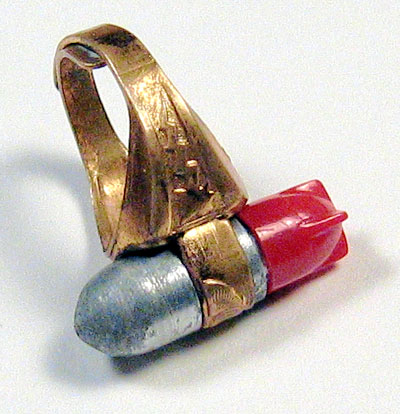Atomic Advent Calendar: Day 7 Gift Idea





This ring spinthariscope was available beginning 1946 by sending in a boxtop of Kix cereal plus 15¢ (only $1.73 in 2019 dollars) to receive a seething scientific sensation. With it, you could see atoms smashed to smithereens! Go to a dark room, take off the red plastic tail fin, wait until your eyes adjust to the darkness, then peer into the unknown of the warhead and see frenzied flashes of light caused by the released energy of atoms splitting like crazy.
This small spinthariscope had polonium alpha particles that struck a zinc sulfide screen. With a half-life of 138 days, polonium-210 is considered safe at very minute levels and is found in uranium ores. Although, polonium is considered one of the most biologically dangerous materials. A microgram of polonium-210, about the size of a speck of dust, can deliver a fatal dose of radiation.
The scintillations were exciting for a while, but eventually you would just have a fun ring with a secret compartment. And you would have avoided the fate of Irene Joliot-Curie and Alexander Litvinenko.












